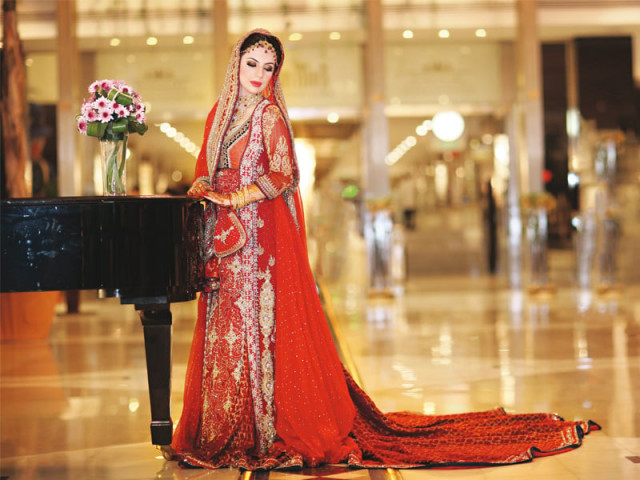
It is not unusual for photographers to be hollering off these instructions at wedding shoots these days. Gone are the days when orchestrated portraits of the bride and groom lined thick velvet-bound wedding albums and were left to gather dust a few months after the wedding. From the lighting to the mood, everything is different now. Even the props have changed. Funky placards scribbled with playful messages have replaced the quintessential red roses. Social media is the new drawing room where everyone is invited to ogle and gush over how perfect your wedding was. Spunky, casual and colourful is the new world order in the matrimonial universe. While the wedding basics in Pakistan are still the same, their visual documentation has evolved drastically over the past decade.

Wedding photography in Pakistan has gone through a complete transformation in the past decade. PHOTO: ALI KHURSHID
Stretching for over a week, with people of all ages and sizes donning their most colourful outfits and expressions, most Pakistani weddings are a photographer’s dream. When all is said and done, and the events slowly fade into memory, it is the visual documentation that allows these wedding memories to be relived. Technology has certainly revolutionized this process. Gone are the days when the photographer left behind a hazardous trap of long curling wires and flashed artificial lights powerful enough to blind an eagle. Today, smartphones and DSLRs have transformed everyone into a Facebook journalist of sorts but it takes more than a fancy camera to prove your mettle as a professional.

Wedding portraits have evolved significantly over the years. COURTESY: TOOBA MASOOD
Instead of a ‘photographer’ cousin or friend lingering awkwardly with a camera, families have now started hiring professionals who charge anywhere between Rs20,000 t0 Rs50,000 per day to document their big day with style. The landscape has not only improved in terms of technology, but also the aesthetics. In the past, intrusive professionals were eager to direct wedding traffic, shooting cheesy staged moments. Today, fly-on-the-wall style photographers who dissolve into the background and silently capture authenticity are gaining popularity.
“My biggest nightmare was looking like a painted wax model in my wedding pictures. I wanted a fresh look, something that matched our personalities and relationship,” says Sanober Adeel who got married in March this year.
Few exemplify this new age of photographers more than the soft-spoken Kohi Marri, who is credited by his peers for bringing about the wedding photojournalism revolution in Pakistan. A graduate from the Oxford Brookes University and an award-winning photojournalist, Kohi started his wedding photography career by accident in 2005. “I took my camera because I didn’t know what else to do at my cousin’s wedding. [My cousin] liked the pictures and from there it was word of mouth.” After a couple of family wedding shoots, Kohi’s alternative career trajectory took off. “Initially, I thought it would be nice to do wedding pictures as an artistic statement,” he says, but with time he became one of the most renowned names in the industry.

Wedding portraits have evolved significantly over the years. COURTESY: TOOBA MASOOD
And that is not surprising, since he makes sure to shoot an event exactly the way he would want his own wedding shot — unseen, yet taking great photos. “I work alone because the personal relationship with the client creates intimacy. I blend into the situation and background [to] get more interesting pictures [and] capture moments that might have been lost otherwise.” He claims that his quiet style makes him a ‘specialist in the unplanned’, “I do like kids running amok. I love those pictures. They result in unplanned gems, which are the best.”
Kohi’s humble disposition and generosity with sharing clients has made him equally popular with clients and fellow photographers. Perhaps the biggest benefactors of Kohi’s bigheartedness have been the female duo, Sitwat Rizvi and Insiya Syed. “He is really one person who we owe a lot. When he took a break in 2009, he passed us a lot of his clients. I [also] remember borrowing a flashlight [once] when he literally gave me a fifteen minute crash course on lighting,” says Insiya. As an expression of his faith in their talent, Kohi even trusted the pair with shooting his wedding.

Wedding portraits have evolved significantly over the years. COURTESY: TOOBA MASOOD
But while Kohi is quieter in his approach, Sitwat and Insiya are known for their flamboyance. Insiya speaks with an enthusiastic energy, and says that they are at a wedding to make sure everyone has a good time. “When families in a group photo [don’t smile], we say ‘Can you pretend that you love each other’ and that automatically loosens them up.”
Sometimes, they have to accommodate strange requests. A bride once asked the duo to take pictures on their tiptoes to avoid capturing her double chin. Others seem to have difficulty believing that an all-female photography team can exist in Karachi — a concept which was completely alien until five years ago. “An hour into [one of] the wedding shoots, an uncle asked why the wedding photographers hadn’t shown up. He didn’t realize we were it!” says Insiya. Always encouraging wedding guests to loosen up, she admits that as women, they can push boundaries in ways men can’t, “The guests being filmed weren’t dancing, so we stood behind the camera guy and started dancing until the guests joined in.” While some would disagree, Insiya feels that as women they are more compassionate which gives them a better eye for emotion. “Being girls we have more sensitive eyes to capturing moments. We can predict more sensitive moments because we are more emotional.”
Unfortunately, the sensitivity shown by photographers towards the family’s feelings is sometimes not reciprocated. Insiya says that while her team is treated with hospitality due to their privileged backgrounds, photographers of more moderate means are not even offered food by the clients at times.

Modern couples prefer more candid shots rather than the orchestrated ones. PHOTO: ALI KHURSHID
Hence, it is challenging to make your own families understand this relatively unconventional professional choice. While Insiya credits her family for being hugely supportive, Kohi’s family did not understand his passion initially and wanted him to take up a corporate job. The story was similar for Irfan Ahson, whose Fine Art Weddings studio in Lahore boasts nearly 275,0000 fans on Facebook. Today, Irfan’s successful business caters to high-profile clients, including numerous celebrities such as Atif Aslam, politicians, and army officials. But when Irfan, an engineering graduate from the USA, initially shifted his focus towards photography, his family was quite candid in their disapproval. “[My] Dad said [a] photographer is someone who doesn’t know anything else… At one point my wife even said, ‘Don’t mention on your son’s school form that his father is a photographer.’” He adds that the perception of the profession in Pakistan is the main problem. “People think that anybody who can push a button is a photographer with a blue-collar job.”
Until Irfan moved to Lahore in 2010, he worked on the side as a photographer in the US, covering American weddings. Sadly, his worst experiences were at the hands of desi clients. “The gora clients treated me like an artist, but the desi clients were just heartless. They were always interested in pushing me to get the most amount of work for the least amount of money.” Irfan also hasn’t had the best experience with celebrity clients, who have been slow to pay for the services. “For some reason, celebrities’ think the world owes them!”
After gaining a significant amount of experience in America, Irfan decided to return to Pakistan and shot his first wedding a few days after moving back. His work caught on in Lahore like wildfire, and the quality of his photographs — in which everyday brides, shot against vibrant backdrops, looked like glamorous supermodels — spoke for itself. However, as a photographer, Irfan prefers Karachi weddings as they seem less staged. Perhaps it is a case of the grass being greener on the other side, but many Karachi-based photographers insist that Lahore weddings are more exciting.

Wedding photography in Pakistan has gone through a complete transformation in the past decade. COURTESY: TOOBA MASOOD
Ali Khurshid, whose Karachi based team has worked in many cities across Pakistan, the U.A.E., and Thailand, explains the differences between the two major Pakistani cities. “Lahore weddings are more energetic. They have had desi ghee and they understand the lyrics. The nanis and daadis even know how to dance. In Karachi, their hands are moving, but they are not into it. They are dancing for their friends. But in Lahore they really mean it. The [pleasant] weather [in Lahore] plays a big factor also.” His own personal favourite, however was a wedding in Multan. “They love their halwa, which was a huge part of the wedding. The people there were very warm and nice. I loved the pre-Partition furniture, and the nice outdoor locations, which included halls and forts.” Shooting weddings is an indulgence for Ali and he makes time for it despite his hectic schedule. “I am shooting the happiest days of someone’s life and it is a privilege. I have shot Hindu, Parsi, and Christian weddings. Sometimes, there is so much happening and I have to sit down and reflect.”
It was the desire to shoot a gorgeous video regardless of the budget that led Paiman Hussain and Sammer Sultan of the Karachi-based venture, Lollipop and Laddu, to document a mohallay ki shaadi along with their regular high-end clients. But if your work is good, there is money to be made in this profession. Hence, the last few years have seen many new names entering the industry such as Shahrukh Khurshid who is popular for his regal shoots and Ali K Ahmed, who is also known as ‘Chota Kohi’ due to his remarkably emotive work.

Wedding photography in Pakistan has gone through a complete transformation in the past decade. COURTESY: FARAHNAZ ZAHIDI
But for the old guns in the industry, things have not been so easy. With the rise in competition and modern advertising techniques such as Facebook, those who have not improvised have had to bid farewell to their careers.
“You have to be able to offer unique services and also be able to meet the changing demands of the client. Or else you can’t survive,” says Nusrat Jamali, who has been operating solely in the market for the past 30 years. But he admits that the increase in competition has driven up prices which is a positive sign.
Getting the right photographer features on top of the couple’s wedding to-do list these days and extravagant budgets are set aside to get the right name on board. The high demand also means that the bookings need to be made well ahead of the big day. “My fiancée and I finalised our photographer seven months before the wedding. We wanted someone who understood what we wanted from the photos and would be available for all the dates,” says Tooba Khurshid who got married early this year. “If you are putting so much effort into the whole affair, it is only sensible to spend money on the person who will turn it into a memory.”

Although it is clear that all the photographers love their job, the profession is certainly demanding. A typical wedding shoot can take up to five hours, during which the photographers are tested for both flexibility and endurance. To keep up, Ali Khurshid went on a special protein diet to improve his fitness levels and Ali K Ahmed decided to complete a back surgery due to the rigors of the job. Working late into the night is also a problem due to the security situation in the country. Most photographers, especially those based out of Karachi have to take a firm stand on the cut-off time.
Trying to document other people’s happy moments inevitably means that you have very little time for your own. The profession is a double-edged sword — while the photographers end up making countless friends at their events, it takes a toll on their personal lives. “My wife understandably had complaints because my work never ended. It started outside with shoots, and continued at home. Social life was dead, and is now even worse, but I have scaled back since I became a father,” says Kohi.
While the photographers can bring the right gear and skill to the table, it ultimately depends on the couple to bring the right attitude to the wedding. Shahrukh Khurshid, who notes that the hosts often have dark circles under their eyes, advises, “Discuss and come to a decision with your family as to how you want your photographer to shoot, in order to avoid conflict on your [big] day. Relax, and don’t forget to have fun!”
Insiya also emphasises the importance of positive energy. “There is no point in stressing over stuff you have no control over. You can feel the stress and you can feel the love. If you have fun, your images will end up looking you like had a blast.”
Noman Ansari is a freelance writer and a regular contributor for several publications. He tweets @Pugnate
Published in The Express Tribune, Sunday Magazine, December 8th, 2013.

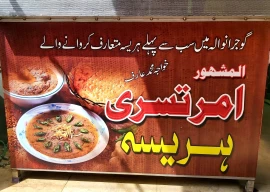
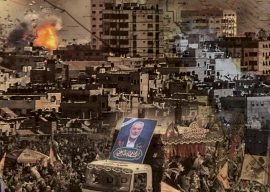
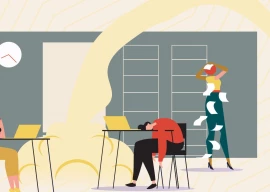

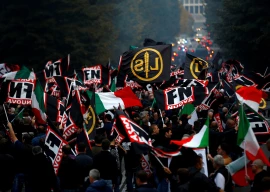
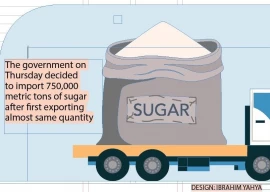
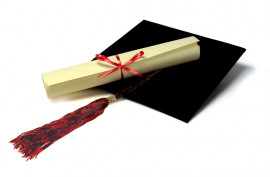
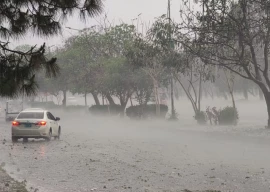

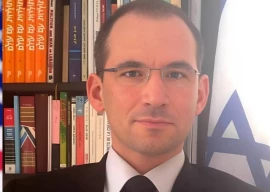


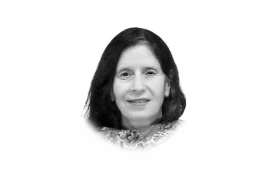
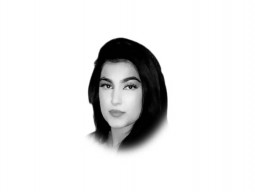



COMMENTS
Comments are moderated and generally will be posted if they are on-topic and not abusive.
For more information, please see our Comments FAQ